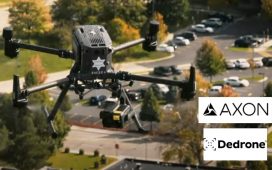Previously, someone wanting to transition technology from the lab to the operational community might not know whether to approach Cyber Command, the cyber components within the military services or particular program managers. “At a very high level, it’s pretty easy. There’s DARPA, and there’s Cyber Command. You should just talk to each other. But it’s actually a much more complicated structure,” Patel offered.
Although DARPA and U.S. Cyber Command are the major players, others will be included. “Constellation is going to be a collection of pilots where we want to test out some of the capabilities and show viability in an operational warfighting platform,” Patel added. “We have DARPA at the table. We have Cyber Command at the table. We’re going to have a service cyber component, so an example of that might be Army Cyber Command, at the table. And we’re also going to have the particular vendors at the table.”
In a separate interview, Steven Rehn, Army Cyber Command chief technology officer, confirmed the command is actively participating in the Constellation effort. “DARPA has a direct relationship with [U.S.] Cyber Command. Depending on what the opportunity is within Constellation, they work with us. So, we work through [U.S.] Cyber Command to support Constellation.”
Lucht added that the goal for the U.S. Cyber Command J9 is to build an “innovation ecosystem” including multiple research partners. “That includes DARPA, but it also includes other science and technology labs. That includes the service research labs, our FFRDC [federally funded research and development center] partners, our university partners. We started with DARPA, and we view Constellation as a method to figure the process out.”
Historically, innovation from the science and technology community has involved long-term research and resulted in technology with a readiness level too low to transition easily to operational forces. “Which is why Constellation is so important to us as a pilot to help us understand how to shorten that, that Valley of Death and actually get technology from the science and technology organization in the hands of our operational forces,” Lucht said.
Patel illustrated the traditional process in simple terms. “It’s been the fact that DARPA runs some science and technology programs. We have some contracts, we do some work, and then oftentimes—I’m being a little bit reductionist here—but we throw some technology that works in a lab over the fence to Cyber Command and say, ‘We’ve shown it works, parenthesis, in a lab environment. You guys gotta make it work in the real world.’”
And while that may work from a science and technology perspective, it doesn’t always make sense for operational forces, he added. “So [Constellation is] an opportunity for there to be an alignment in everybody’s understanding of the problem space. From there is an opportunity now to actually move out as a true group in unison.”
The Constellation program may also serve as a model for other government departments and agencies to partner with other research laboratories. “There will be specific implementation details that are different for each of them because every relationship is a snowflake. But I have talked to governmental organizations outside the Department of Defense in a lot of detail of the nuances of how Constellation is being set up between us and Cyber Command, and by and large the response has been pretty good and pretty excited,” Patel revealed. “It’s certainly not my place to talk about what other organizations are going to do, but I would wager that similar efforts will pop up at some point in other organizations.”
While military networks will be the initial Constellation beneficiaries, Lucht asserted that the program will ultimately improve cybersecurity for the nation, including government, industry and critical infrastructure. “Constellation is just the beginning. We’re building an ecosystem of what we like to call innovation providers. At the end of the day, Cyber Command has a duty to defend Department of Defense networks, but if we can transition defensive technologies to industry for them to license and build their own products based on that technology, it collectively raises the cybersecurity posture of the entire country. It makes us all collectively better.”
Wick, the U.S. Cyber Command public affairs official, emphasized the point. “What they’re doing is they’re sharing that with an industry partner and then those Microsofts of the world, those Apples of the world, those Oracles of the world, are able to harden their networks, harden their software, harden their products, and then push that out to a wider audience. So, it’s not just about our defense mission—that’s one key part of it—but it’s also about ensuring that the nation, as a whole, is resilient and defended.”










